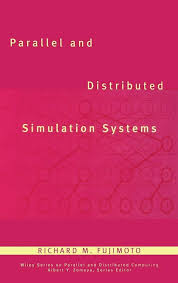Parallel and Distributed Simulation: A Fujimoto-Based Approach
Introduction
Parallel and distributed simulation (PADS) has emerged as a powerful technique to address the computational challenges posed by complex and large-scale simulations. By dividing a simulation model into smaller, independent submodels that can be executed concurrently on multiple processors or computers, PADS can significantly accelerate simulation execution and enable the study of larger and more complex systems.
This white paper will delve into the Fujimoto approach to PADS, exploring its key concepts, algorithms, and applications. We will also discuss the challenges and limitations associated with PADS and explore potential future directions.
Fujimoto Approach to PADS
The Fujimoto approach, also known as the Time Warp mechanism, is a popular and widely used technique for PADS. It is based on the concept of optimistic synchronization, where each submodel advances its simulation time independently and then resolves any inconsistencies that may arise due to message passing.
Key Concepts:
- Logical Process (LP): A self-contained unit of simulation that represents a part of the overall system.
- Time Stamp: A unique identifier associated with each event in a simulation.
- Causality: The principle that events must occur in a causal order to ensure correct simulation results.
- Optimistic Synchronization: The approach of allowing LPs to advance their simulation time independently and then resolving any inconsistencies.
Time Warp Algorithm:
- Event Processing: Each LP processes events in its local event queue according to their time stamps.
- State Saving: Before processing an event, the LP saves its current state to a rollback point.
- Message Sending: When an LP generates a message, it sends it to the appropriate LP based on the destination's address and the message's time stamp.
- Message Reception: When an LP receives a message, it compares its time stamp with the LP's current simulation time.
- If the message's time stamp is greater than the current time, the LP schedules the message for later processing.
- If the message's time stamp is less than or equal to the current time, the LP processes the message.
- Inconsistency Detection: If processing a message leads to a violation of causality, the LP detects an inconsistency and rolls back to the previous state saved at the time of the inconsistent event.
- Rollback: The LP undoes all actions performed since the inconsistent event, recovers its state from the rollback point, and reschedules any events that were processed after the inconsistent event.
- Anti-Messages: To efficiently handle rollbacks, the LP sends anti-messages to cancel any messages that were sent erroneously due to the inconsistency.
Challenges and Limitations
- Rollbacks: Frequent rollbacks can significantly impact performance, especially in simulations with high levels of parallelism.
- State Saving: Saving the state of an LP at frequent intervals can be computationally expensive.
- Message Filtering: Efficiently filtering and processing messages can be challenging, especially in large-scale simulations.
- Deadlock Avoidance: Preventing deadlocks in PADS can be difficult, especially in complex simulations with cyclic dependencies.
Applications and Future Directions
- Discrete Event Simulation: PADS is widely used in various domains, such as manufacturing, transportation, and communication networks.
- Continuous Time Simulation: PADS can also be applied to continuous time simulations, such as fluid dynamics and weather modeling.
- Hybrid Simulation: Combining PADS with other simulation techniques, such as agent-based modeling or system dynamics, can enable the simulation of complex systems with heterogeneous components.
- Cloud-Based Simulation: Leveraging cloud computing infrastructure can provide scalable and flexible resources for PADS, enabling the simulation of even larger and more complex systems.
Conclusion
The Fujimoto approach to PADS has proven to be a powerful and versatile technique for accelerating simulations and enabling the study of complex systems. While it faces certain challenges, ongoing research and advancements in hardware and software technologies are continually addressing these limitations and expanding the applicability of PADS. As PADS continues to evolve, it will play an increasingly important role in scientific research, engineering design, and decision-making processes.
References
- Fujimoto, Richard M. (1989). Time Warp: A Technique for Parallel and Distributed Simulation. Transactions of the Society for Computer Simulation, 6(3), 167-189.
- Bagrodia, Rajive L. (1998). Parallel and Distributed Simulation: A Survey. ACM Computing Surveys, 30(2), 113-142.
- Nicol, David M., and F. Wieland (1994). The Performance of Parallel Discrete-Event Simulation. IEEE Transactions on Parallel and Distributed Systems, 5(1), 32-47.
- Fujimoto, Richard M., and K. Perumalswami (1990). The Design and Performance of Parallel Discrete-Event Simulation. In Proceedings of the 1990 Winter Simulation Conference, pp. 759-768.



